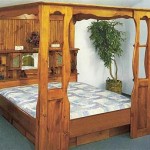How to Hang a Large Mirror on a Plasterboard Wall
Hanging a large mirror on a plasterboard wall can be a daunting task, especially for those who are not familiar with the process. Plasterboard, also known as drywall, is a common material used for interior walls and ceilings, but its lightweight and porous nature can make it challenging to securely support heavy items like mirrors. However, with proper preparation and techniques, it's possible to hang a large mirror on a plasterboard wall safely and aesthetically.
1. Assess the Weight and Determine the Right Hanging Method
Before embarking on the hanging process, it's crucial to assess the weight of the mirror and choose the appropriate hanging method. The weight of the mirror will dictate the type of fasteners required for secure support. For heavier mirrors, traditional picture hooks or nails may not provide adequate support, necessitating alternative methods.
Here are some common hanging methods for large mirrors on plasterboard walls, categorized by mirror weight:
- Lightweight mirrors (up to 10 lbs): Lightweight mirrors can be hung using picture hooks or nails. Choose a hook or nail that can securely support the weight of the mirror.
- Medium-weight mirrors (10-25 lbs): For medium-weight mirrors, consider using heavy-duty picture hooks or toggle bolts. Toggle bolts expand behind the wall to provide a secure anchor point and are suitable for plasterboard walls.
- Heavyweight mirrors (over 25 lbs): Heavyweight mirrors require specialized hanging methods, such as using drywall anchors or mounting plates attached to studs in the wall. Consult with a professional if you are unsure about the best method for your mirror.
2. Locate Studs for Secure Support
Once you've determined the hanging method, the next step is to identify the studs in the wall. Studs are the vertical structural members in a wall that provide the most secure support for heavy objects. Locating studs is crucial for ensuring the mirror is hung securely and won't fall.
There are several methods to locate studs, including:
- Stud finder: This electronic device uses magnetic sensors or other technologies to detect the presence of metal objects, including studs, behind the wall.
- Tapping: Gently tap on the wall, listening for a solid sound when you hit a stud. The sound will be different from the hollow sound produced when tapping on the plasterboard.
- Visual inspection: In older homes, the placement of studs may be visible from the ceiling or floor. Look for a seam in the drywall or a slight change in texture.
3. Prepare the Wall and Install the Hanging Hardware
Once you've located the studs, prepare the wall by cleaning the area where you intend to hang the mirror. Use a damp cloth to remove dust, dirt, and debris. For heavy mirrors, it's recommended to reinforce the plasterboard with a piece of plywood or a drywall patch for additional support.
Depending on the chosen hanging method, install the appropriate hardware. For picture hooks or nails, simply hammer them into the wall. For toggle bolts, drill a pilot hole slightly smaller than the bolt diameter, then insert the toggle bolt and expand it behind the wall. For drywall anchors, drill a pilot hole and then insert the anchor into the hole.
4. Align and Secure the Mirror
With the hanging hardware installed, gently hold the mirror against the wall to check the alignment and ensure it is level. Once satisfied with the position, carefully secure the mirror to the hardware. For picture hooks or nails, hang the mirror directly. For toggle bolts or drywall anchors, use screws to attach the mirror to the hardware.
To ensure the mirror hangs straight, use a level to check its horizontal and vertical alignment before fully securing it. Adjust the mirror's position as needed until it is level and centered.
5. Final Touches and Safety Considerations
After securely hanging the mirror, inspect the hardware to ensure it is firmly attached and the mirror is hanging stably. If there is any movement or instability, tighten the screws or reattach the hardware.
Here are some final touches and safety considerations:
- Wall protection: If the mirror is heavy or prone to movement, consider placing protective pads or felt pads behind the mirror to prevent damage to the wall.
- Secure mounting: Ensure the mirror is securely mounted and cannot easily fall, especially if it's located in an area where children or pets have access.
- Professional consultation: If you are unsure about the best hanging method or have concerns about the weight of the mirror, it's always advisable to consult a professional for guidance and assistance.
Hanging a large mirror on a plasterboard wall requires a bit of planning and attention to detail, but with the right approach and tools, it's a manageable task that can enhance the aesthetics of your home.
How To Hang A 100 Pound Mirror On Drywall Quora

How To Hang A Large Or Heavy Mirror

How To Hang A Very Heavy Picture Or Mirror The Best
:strip_icc()/ScreenShot2022-04-28at1.12.19PM-e055476c70c6438585fa7c5cd531edcf.png?strip=all)
4 Easy Ways To Hang A Heavy Mirror

A Better Way To Hang Heavy Mirror Hanging Pictures
Hanging Heavy Framed Mirrors Lath Plaster Walls The Picture Framers Grumble

Hang A Mirror On Plasterboard Wall Soraya Interiors

Easiest Way To Hang A Heavy Picture Or Mirror

How To Hang A Heavy Mirror With Pictures Wikihow

How To Hang A Large Wall Mirror Step By Tutorial








